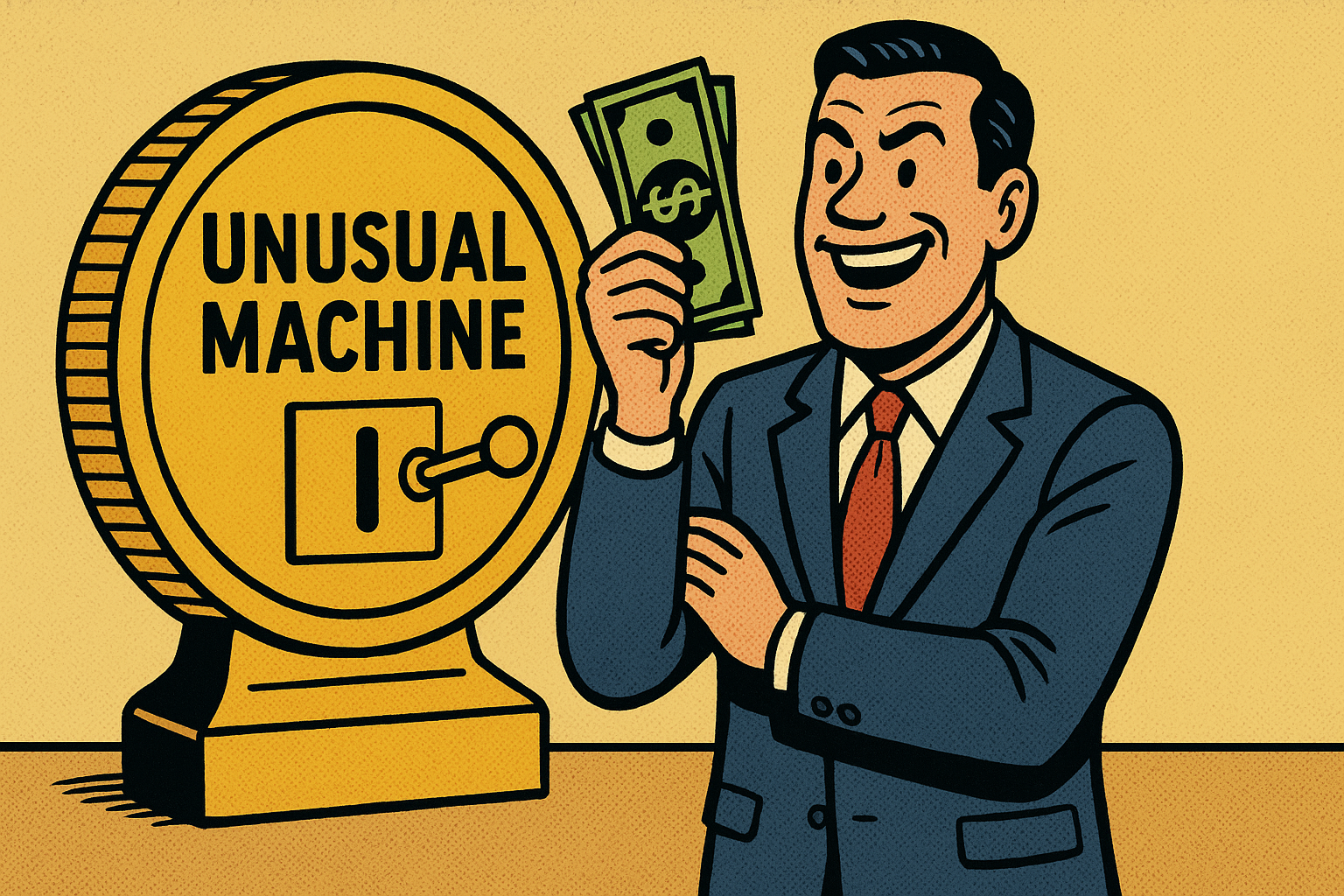San Jose, CA – LightPath Technologies announced Tuesday that it has secured $8 million in Series B funding from investor Glen F. Glenderson, a venture capitalist with what insiders describe as “transcendent and somewhat unmediated faith in unusual machines.” The funding round, described in press materials as “vigorous,” will rapidly accelerate LightPath’s rollout of their hybrid mechanical-electrical modules, which the company and Mr. Glenderson have confidently pitched as the world’s next global currency.
“Traditional assets only store value. Unusual machines radiate it,” said Glenderson, whose fund, Enthusia Capital, focuses exclusively on mechanical novelties considered “impractical by conventional wisdom.” LightPath’s CEO, Susan Voss, emphasized the strategic nature of the new partnership. “Glen brings not only capital, but a rare willingness to recalibrate the definition of money itself,” Voss stated during an exuberant press call. “Under his guidance, we look forward to accelerating humanity’s transition to object-based finance.”
LightPath’s technology centers around compact mechanisms that exhibit unpredictable kinetic behaviors. According to the company’s white paper, their flagship unit—the Resonant Scripulon—responds to a range of stimuli including light, mild humidity, and “ambient financial intention.” As outlined by Dr. Keith Paralevsky, LightPath’s Chief of Value Dynamics, these devices are “not merely coins or bills, but semi-sentient entities whose fluctuating behavior spontaneously denominates purchasing power.” The company’s pilot in Luxembourg demonstrated so much volatility that nearby supermarkets briefly denominated prices in the number of times a Scripulon rotated per hour.
Financial regulators have yet to issue a formal response, but the Federal Reserve’s Subcommittee on Peculiar Holdings met in emergency session Monday. “We remain vigilant regarding the fluid materialization of assets,” said subcommittee spokesperson Carla Jun. Sources inside the Fed note internal divisions: one working group advocates for digital integration of Scripulons; another prefers to ignore them, citing “insufficient grasp of their definition or location.” Meanwhile, LightPath’s machines have begun to proliferate in major banking circles after a shipment was confused for ergonomic desktop toys and redistributed to regional headquarters.
Market response to the announcement has been erratic. Investors seeking to arbitrage machine-induced liquidity were stymied when Scripulon units began to self-replicate or, in several cases, disassemble and reconstitute as “negative instruments” directly in portfolio managers’ office plants. A recent Bloomberg terminal update now includes a Scripulon Volatility Index (SCRI), although its numeric value fluctuated so rapidly during testing that Bloomberg staff reported mild dizziness and a “persistent sense of fungible awe.”
Asked about potential risks, Glenderson remained unmoved. “Risk is a construct. These machines are the architecture,” he said, before reportedly exchanging seven Scripulons for a warm handshake and an envelope of pure potential.
LightPath’s share value closed up eight percent, briefly down four, and then up twelve again before the exchanges reverted to measuring volume by “ambient financial intention.” Analysts expect no meaningful shift unless the unusual machines begin to request payment themselves.

Leave a Reply